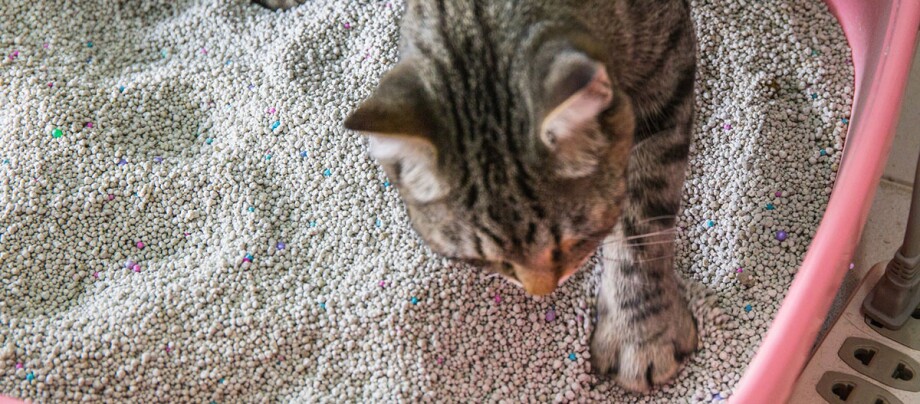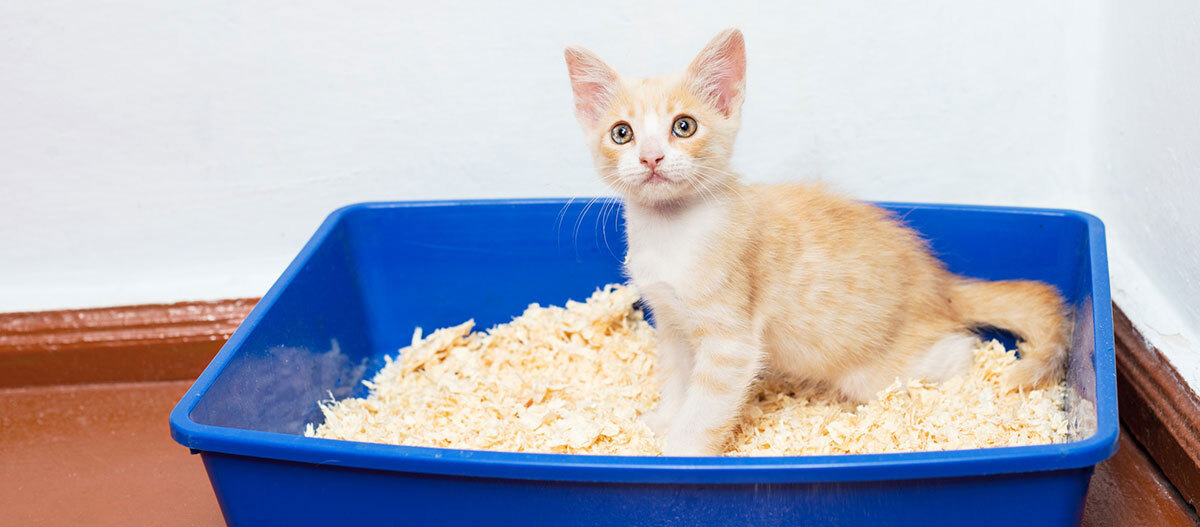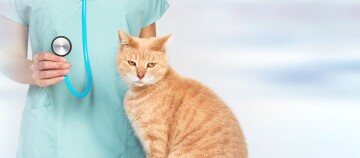How Can I Help My Kitten with Diarrhoea? - Not to Be Taken Lightly
23.11.2022 - Reading time: 5 minutes

Cats are probably the cleanest pets you can imagine. They even use their own toilet. If your cat suddenly can't do its business fast enough, won't move far from the litter tray or even soils the home, you should be alarmed: Diarrhoea in cats is not to be taken lightly. Diarrhoea: How to help your cat.
Why the cat has diarrhoea: causal research
The cat is vomiting and has diarrhoea? If the mishap is limited and the animal seems otherwise cheerful, there may be a simple and harmless reason. Maybe the animal ate something that didn’t agree with it. This also happens to us humans from time to time. Clarify what the animal might have eaten, make it inaccessible and continue to observe the animal’s behaviour. In mild cases, the symptoms will subside quickly. Moderate diarrhoea with vomiting is a self-healing measure of the cat’s body to quickly eliminate incompatible substances.
Acute stress or another psychological trigger can also cause temporary diarrhoea. However, if the diarrhoea lasts longer than two days, becomes more severe and the general condition of the animal is noticeably changed, there is something more serious behind it. It could be an infection, a parasite infestation or, in the worst case, an organic cause. Do not hesitate to take your cat to the vet so that the cause of the diarrhoea can be diagnosed as soon as possible.
How do I recognise symptoms of cat diarrhoea?
The most obvious changes are in the consistency or smell of the faeces: Is it slimy or bloody? Is it outside the litter tray, suggesting that the cat has not been able to hold it long enough? Perhaps your cat is suddenly acting unusually clingy or defensive or withdrawing? Together with faecal changes, this is a serious indication of a health problem. Does your cat express pain when defecating, for example by hissing, meowing conspicuously or restlessly circling the litter tray? Have your vet take a temperature: Is the cat’s temperature – which is 38-39°C in healthy animals – elevated or too low?
Cat with diarrhoea: what to do?
As a first aid for diarrhoea, you need to replace what the cat loses during diarrhoea and any vomiting: Nutrients and water. It is especially important that the cat is able to drink enough fluids to avoid dehydration. Fresh water must be readily available in sufficient quantity – fill the bowl more often. Offer the cat food that does not put a strain on the organism and at the same time ensures a sufficient supply of nutrients.
Another measure is to use cooked and unseasoned chicken meat. You can puree this and mix in a little cottage cheese and grated carrot for fibre to make it palatable for the cat. Make sure the food is at room temperature when you serve it, and give it in up to six small portions. If the diarrhoea does not subside after a short time, a trip to the vet is essential. Do not give the cat anti-diarrhoea medicine for humans or experiment with over-the-counter pet medicines. Only a qualified vet can properly dose and prescribe medication. This also applies to seemingly harmless herbal medicines. Cats can be quite sensitive to pharmaceutical substances.
In many cases, the vet recommends a special diet for cats:
Possible causes of cat diarrhoea
If it turns out that a parasite infestation, for example a worm infestation, has caused the diarrhoea in the cat, this can be treated with medication. Outdoor cats in particular can pick up worm eggs when they roam – if detected and treated in time, this is not a big problem. If you bring a fresh faecal sample with you to the vet, you will make the vet’s job easier. If, after consulting the vet, the cause of the diarrhoea turns out to be a food intolerance or an organic cause, for example a gastrointestinal inflammation or FIP, you will have to change the food in consultation with the vet. This will involve avoiding certain food components in the diet. Once the cause has been found, the food-induced diarrhoea can be controlled.
You can buy a wide range of high quality diets in specialist shops. In addition to paying special attention to food and water, you should also support your cat under difficult conditions: Clean the litter tray more often than usual and provide fresh litter. Long-haired breeds or senior cats who are not able to clean the possibly sticky anus area properly on their own can be helped with a wet wipe.
How can I help my kitten with diarrhoea?
A sick cat with diarrhoea usually gets over the indisposition quickly if it is otherwise in good health. The situation is different with kittens: diarrhoea in kittens can quickly critically weaken the small and not so resistant body. Mild diarrhoea can occur when kittens are switched from breast milk or bottle to solid food. It can also be caused by a worm infestation or an infection from the mother to the babies: Medical attention should be sought immediately. The younger the kitten, the sooner you should see the vet. If necessary, high fluid loss in the kitten must be compensated by infusion.




